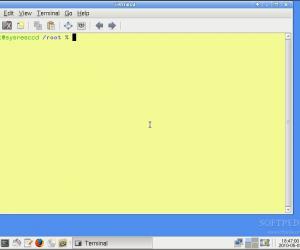

- #Systemrescuecd isolinux rescue64 not found how to#
- #Systemrescuecd isolinux rescue64 not found install#
- #Systemrescuecd isolinux rescue64 not found drivers#
Mkdir /media/mb/syslinux/iso # creation of the directory where to store every Linux distribution we want Mkdir /media/mb/syslinux # create the directory for the syslinux configurationĬp /usr/lib/syslinux/ /media/mb/syslinux # copy same file necessary Mount /dev/sdc1 /media/mb # mount of the USB drive

Syslinux -maf /dev/sdc1 # installation of syslinux and MBR Mkfs.vfat -F 32 -n MULTIBOOT /dev/sdc1 # format with file system vfat Supposing that the device is /dev/sdc1, we can prepare it to become a multiboot USB drive: sudo su Insert the pen drive in a USB port, then open the Terminal and give this command to understand which is the device: fdisk -l

#Systemrescuecd isolinux rescue64 not found how to#
There are several tools to create it, but, in this post, I want to explain how to create a multiboot USB drive using syslinux.įor example we can create it with the following Linux distributions using syslinux on a PC with Ubuntu 14.04: INITRD boot/intel_ucode.img,boot/amd_ucode.img,boot/x86_64/sysresccd.A multiboot USB drive with many Linux distribution it’ very useful for demo, installation or utility. MENU LABEL Stop during the boot process before mounting the root filesystemĪPPEND archisobasedir=sysresccd archisolabel=RESCUE701 breakĭid you know which settings I need in FOG? Stop during the boot process before mounting the root filesystem MENU LABEL Boot a Linux operating system installed on the disk (findroot)ĪPPEND archisobasedir=sysresccd archisolabel=RESCUE701 findroot
#Systemrescuecd isolinux rescue64 not found drivers#
MENU LABEL Boot SystemRescue using basic display drivers (nomodeset)ĪPPEND archisobasedir=sysresccd archisolabel=RESCUE701 nomodesetīoot from a Linux operating system installed on the disk MENU LABEL Boot SystemRescue and verify integrity of the medium (checksum)ĪPPEND archisobasedir=sysresccd archisolabel=RESCUE701 checksumīoot using basic display drivers to avoid display issues MENU LABEL Boot SystemRescue and copy system to RAM (copytoram)ĪPPEND archisobasedir=sysresccd archisolabel=RESCUE701 copytoramīoot SystemRescue and verify the integrity of the live medium MENU LABEL Boot SystemRescue using default optionsīoot the SystemRescue live medium and copy system to RAM
#Systemrescuecd isolinux rescue64 not found install#
It allows you to install Arch Linux or perform system maintenance.ĪPPEND archisobasedir=sysresccd archiso_http_srv= SYSAPPEND 3Ĭontent sysresccd_sys.cfg: INCLUDE boot/syslinux/sysresccd_head.cfg Then to normalize this with the others from my tutorial kernel tftp://$:/run/sysresccd/bootmntīoot the SystemRescue live medium (Using HTTP). Imgargs vmlinuz archisobasedir=sysresccd archisolabel=RESCUE701 Initrd boot/intel_ucode.img,boot/amd_ucode.img,boot/x86_64/sysresccd.img That would translate to in iPXE kernel boot/x86_64/vmlinuz INITRD boot/intel_ucode.img,boot/amd_ucode.img,boot/x86_64/sysresccd.imgĪPPEND archisobasedir=sysresccd archisolabel=RESCUE701 Using your example in syslinux format LINUX boot/x86_64/vmlinuz

Translating between syslinux and iPXE is pretty straight forward. So the question would be if you were to boot this iso image which menu item would you pick? The answer you need IS in the config file, I just need to know the question.


 0 kommentar(er)
0 kommentar(er)
